NURSING 4710 Basic Care and Comfort Prep U
Document Content and Description Below
NURSING 4710 Basic Care and Comfort Prep U Question 1 See full question 53s The breastfeeding mother of a 1-month-old diagnosed with cow's milk sensitivity asks the nurse what she should do about feed... ing her infant. Which recommendation would be most appropriate? You Selected: Continue to breastfeed, but eliminate all milk products from your own diet. Correct response: Continue to breastfeed, but eliminate all milk products from your own diet. Explanation: Mothers of infants with a cow’s milk allergy can continue to breastfeed if they eliminate cow’s milk from their diet. It is important to encourage mothers to continue to breastfeed because breast milk is usually the least allergenic and most easily digested food for an infant. In addition, the infant is able to obtain protein through the mother’s milk. If the mother stops breastfeeding, then a predigested protein hydrolysate formula would be the first choice. An iron-fortified formula is a cow’s milk-based formula. A soy-based formula is not used because approximately 20% of infants with cow’s milk sensitivity are also sensitive to soy. Solid foods are not introduced until the infant is 4 to 6 months of age. Add a Note Question 2 See full question 31s The nurse gives a pamphlet that describes Kegel exercises to a client with stress incontinence. Which statement indicates that the client has understood the instructions contained in the pamphlet? You Selected: ”I can do these exercises sitting up, lying down, or standing.” Correct response: ”I can do these exercises sitting up, lying down, or standing.” Explanation: The client can perform the Kegel exercises anytime in any position listed. Pelvic muscles, not the abdominal muscles, should be contracted during these exercises. The client can learn to identify these muscles by urinating and stopping the flow. To be most effective, the exercises should be performed at least twice a day for a total of 10 minutes a day. If performed regularly, the client should begin to note changes after about 6 weeks. Add a Note Question 3 See full question 47s A client is recovering from a gastric resection for peptic ulcer disease. Which outcome indicates that the goal of adequate nutritional intake is being achieved 3 weeks following surgery? The client: You Selected: increases food intake and tolerance gradually. Correct response: increases food intake and tolerance gradually. Explanation: Weight gain will be slow and gradual because less food can be eaten at one time due to the decreased stomach size. More food and fluid will be tolerated as edema at the suture line decreases and healing progresses. The remaining stomach may stretch over time to accommodate more food. Nausea and vomiting can interfere with nutritional intake. Water provides hydration, but not calories and nutrients. Rapid weight gain may be due to fluid retention and would not reflect adequate nutrition. Add a Note Question 4 See full question 30s Twenty-four hours after an appendectomy, a 16-year-old adolescent of Asian ethnicity reports no pain when asks but is frowning and has the legs drawn to the fetal position. The nurse should: You Selected: administer pain medication. Correct response: administer pain medication. Explanation: While the adolescent is denying pain, he is displaying objective signs of pain. Adults of Asian ethnicity typically display stoic behavior, and the 16-year-old most likely would try to conform to this cultural norm. The nurse should administer an analgesic and assure the client that taking medication will speed the recovery process. The nurse must also reassess the client after administering the pain medication and document the response. The reassessment is typically done 30 minutes after a parenteral analgesic and an hour after an oral analgesic. People who identify with the Asian culture infrequently report concerns and, therefore, asking the client about what is troubling him is unlikely to provide the nurse with additional information. The adolescent’s behavior is consistent with postoperative pain. If the parents are stoic, discussing the adolescent’s behavior may not be productive. At this stage of treatment, distractions can be used in conjunction with medication, but should not be substituted for them. Add a Note Question 5 See full question 1m 11s An 15-month-old child is recovering from surgery to remove a Wilms' tumor. The nurse is performing a postoperative pain assessment. Which parameter(s) indicate that the child may be experiencing pain? Select all that apply. You Selected: touching the painful area increasing heart rate crying Correct response: crying increasing heart rate touching the painful area Explanation: A behavioral change is one of the most valuable clues to pain. A child who's pain free likes to play. In contrast, a child in pain is less likely to play or smile. An increased heart rate may indicate increased pain. Touching the area is also an indicator that there is pain. .....Continued... [Show More]
Last updated: 2 years ago
Preview 1 out of 33 pages
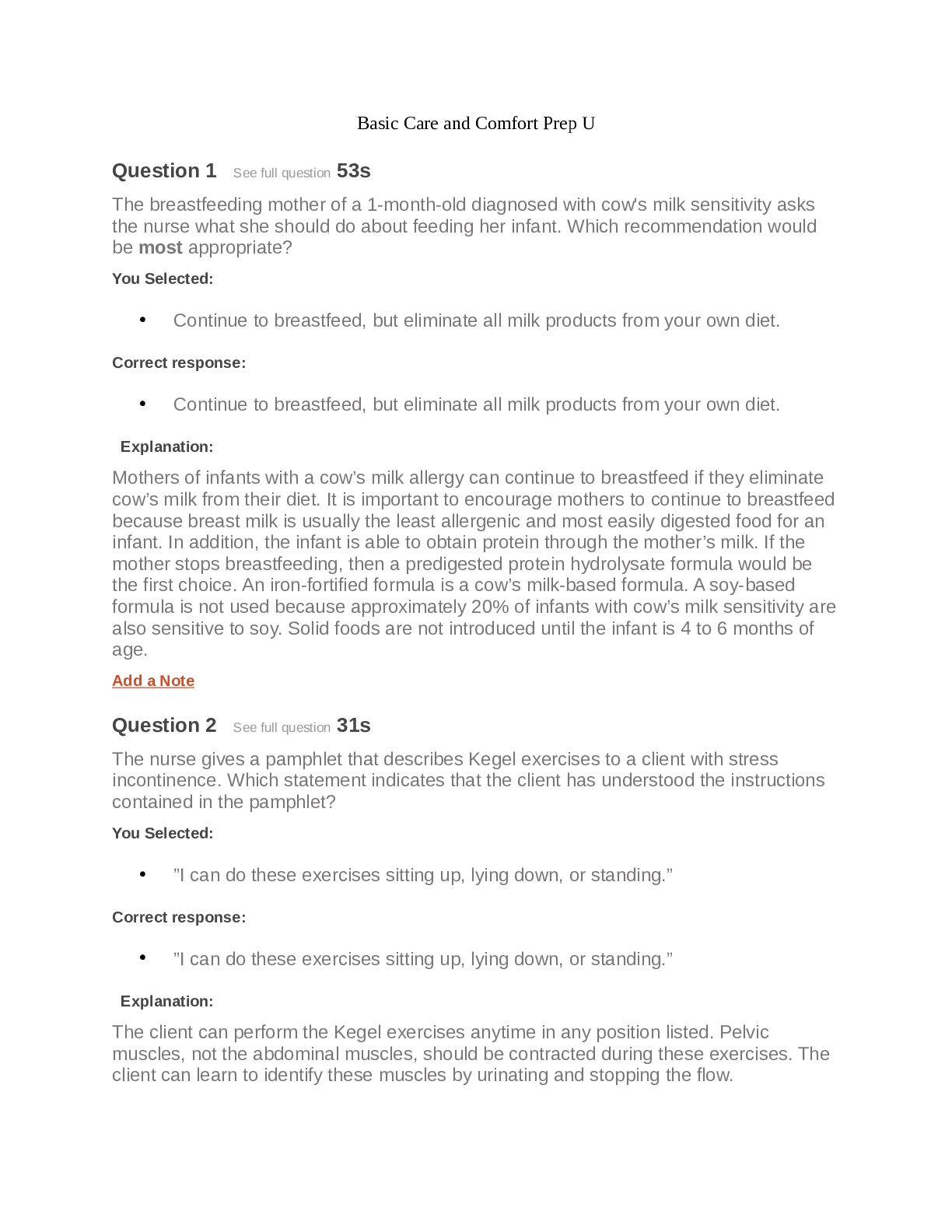
Buy this document to get the full access instantly
Instant Download Access after purchase
Buy NowInstant download
We Accept:

Reviews( 0 )
$16.00
Can't find what you want? Try our AI powered Search
Document information
Connected school, study & course
About the document
Uploaded On
Sep 04, 2021
Number of pages
33
Written in
Additional information
This document has been written for:
Uploaded
Sep 04, 2021
Downloads
0
Views
97


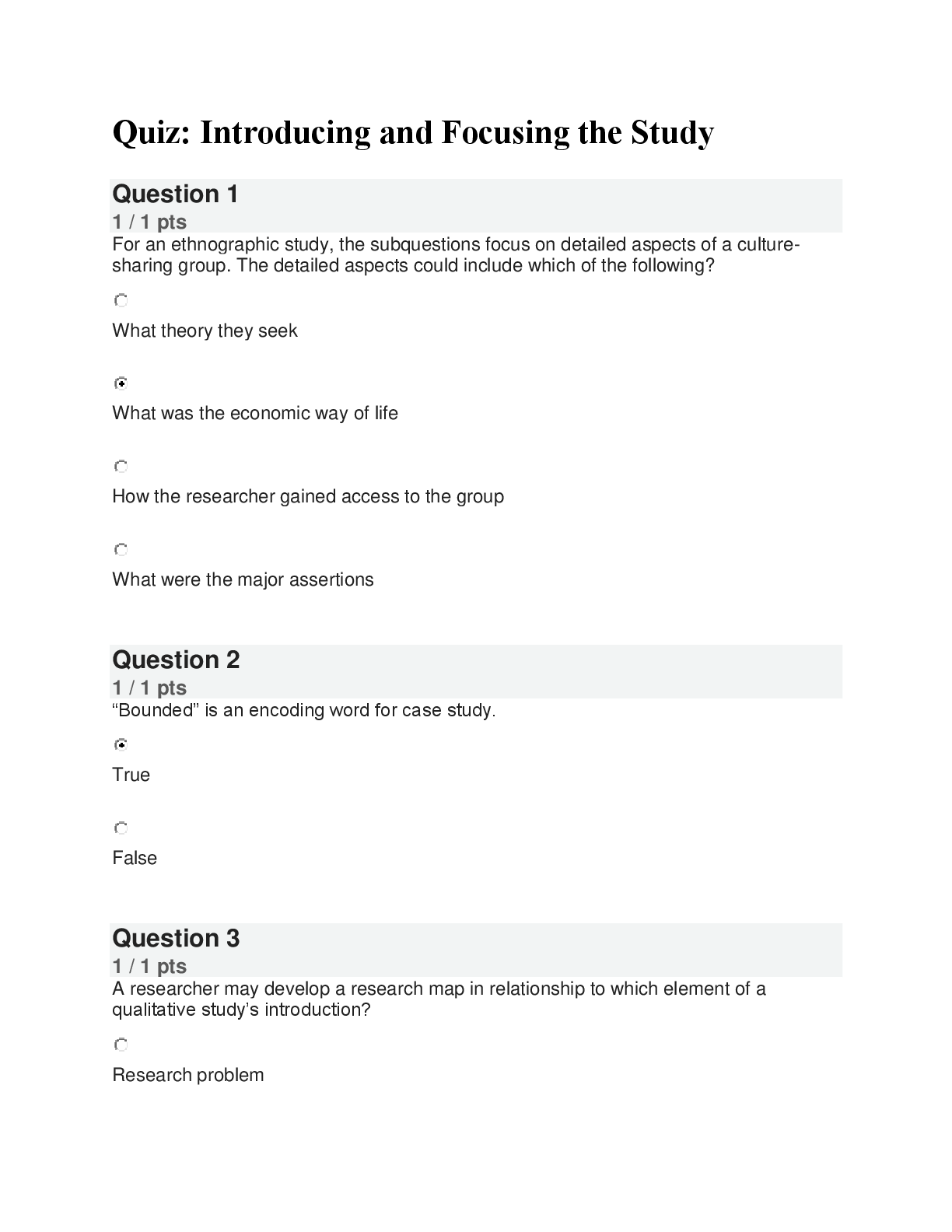
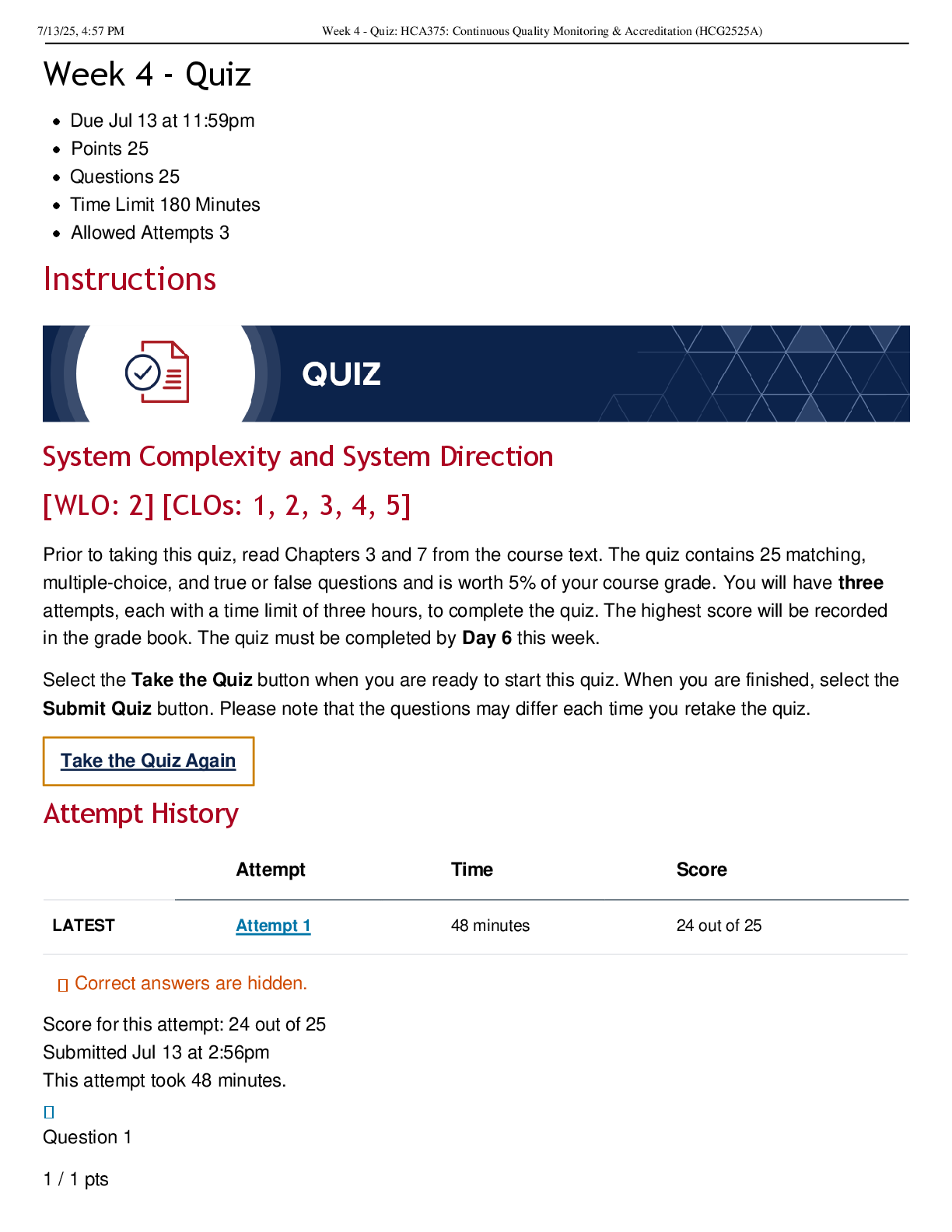

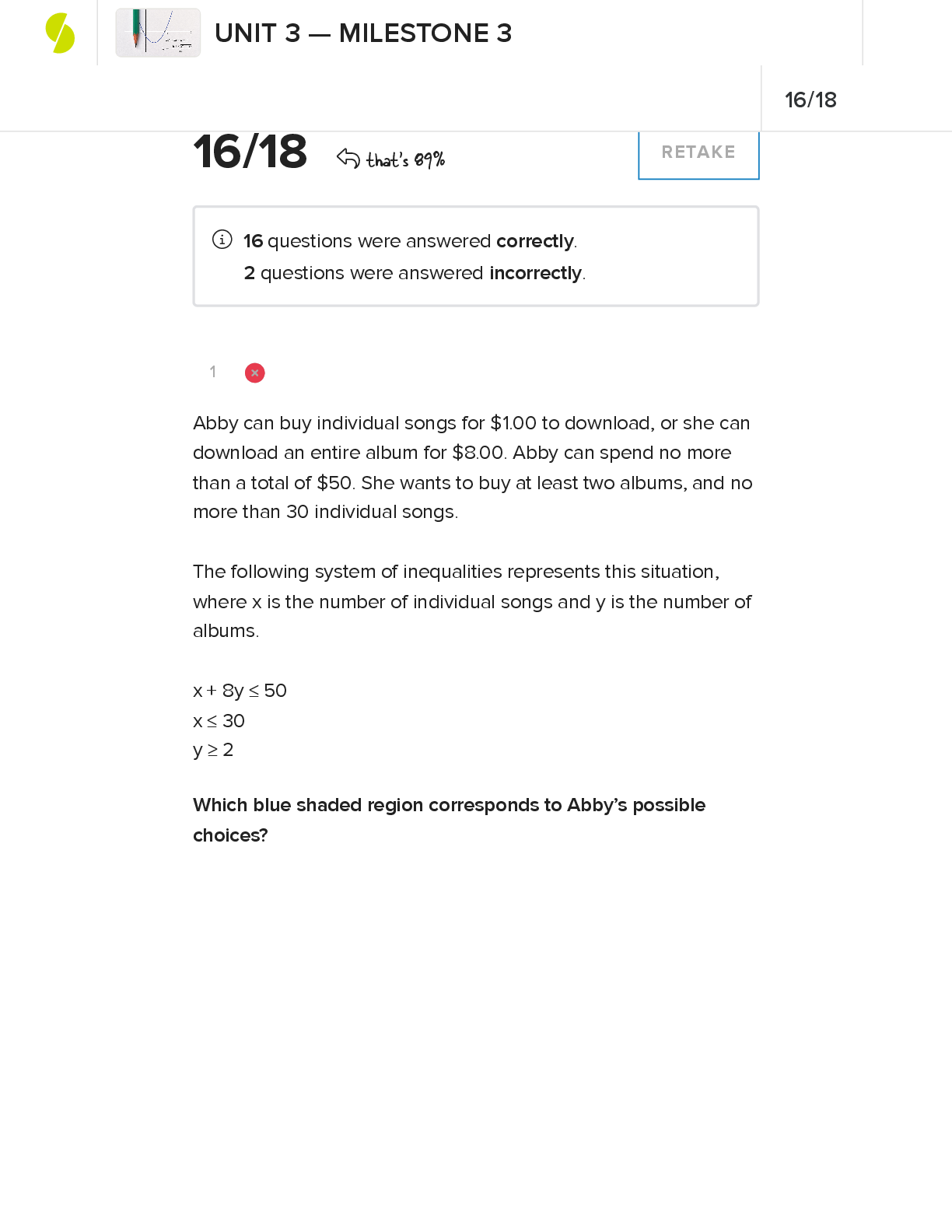
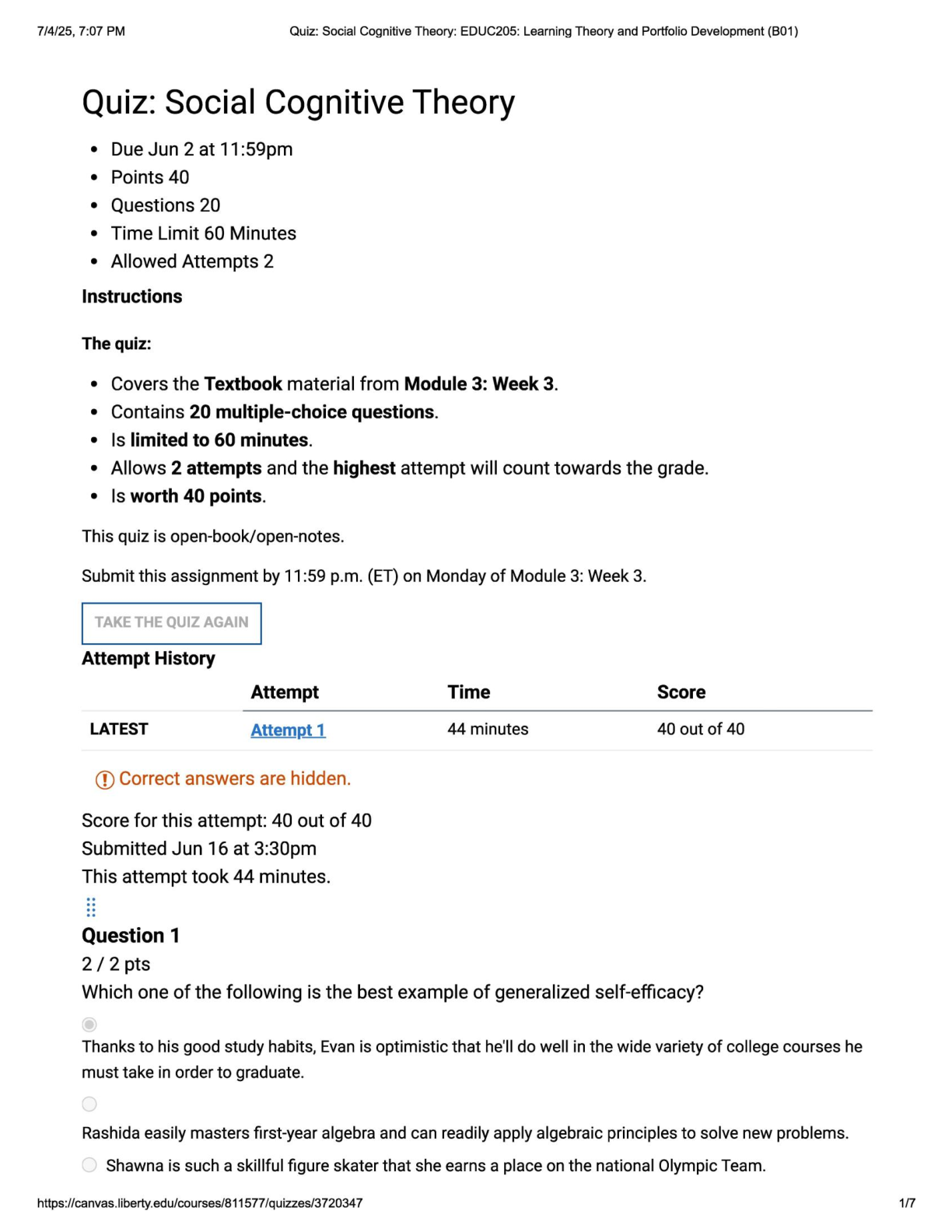
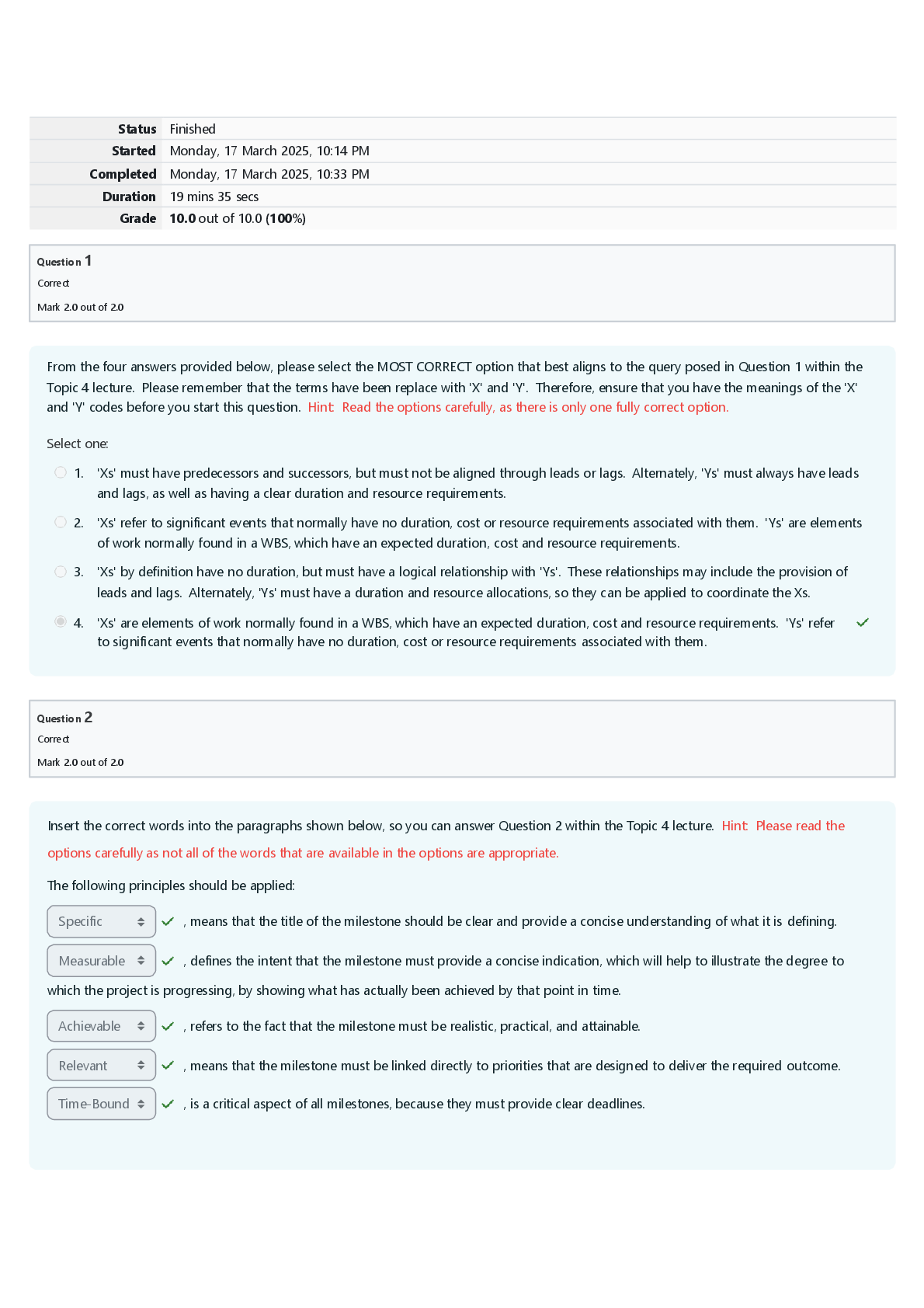
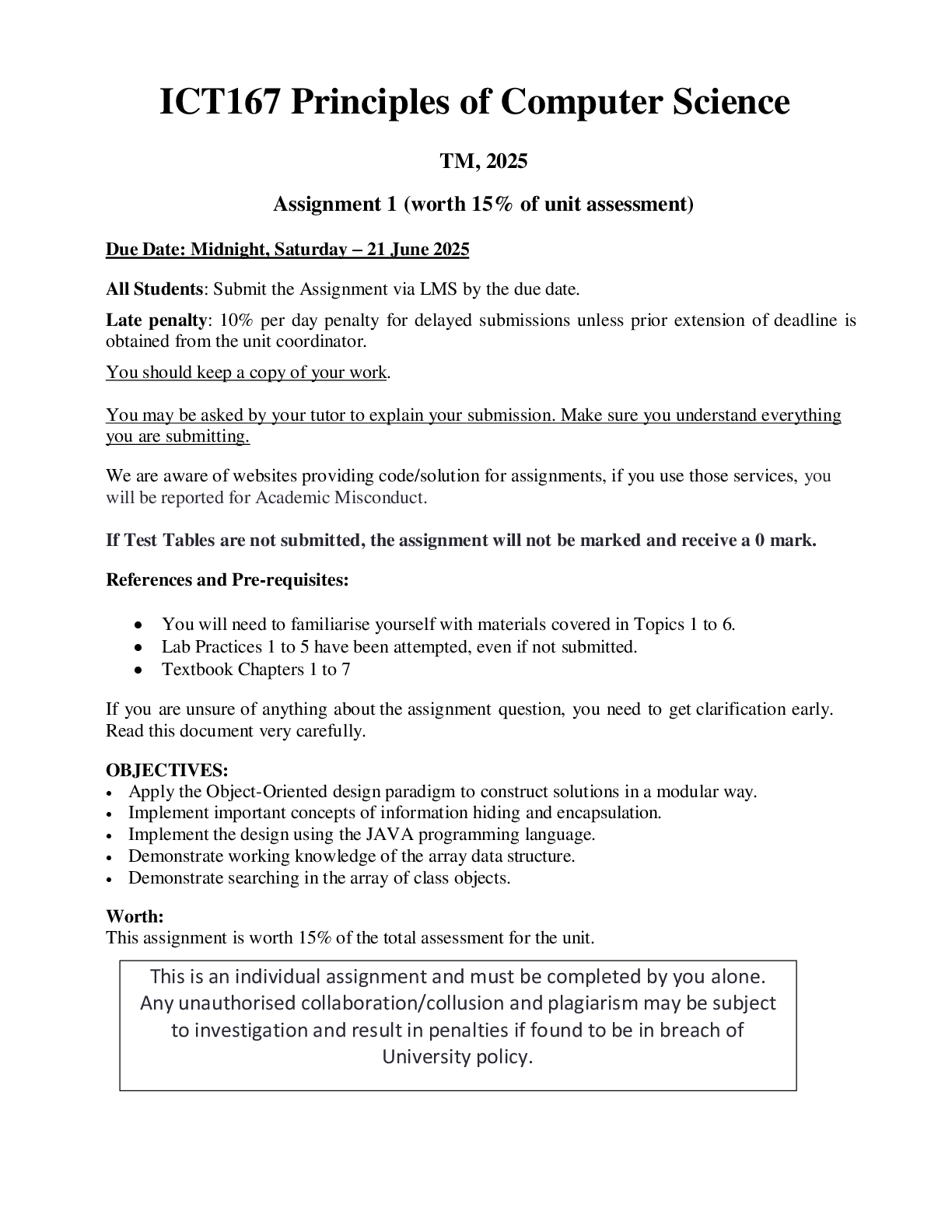
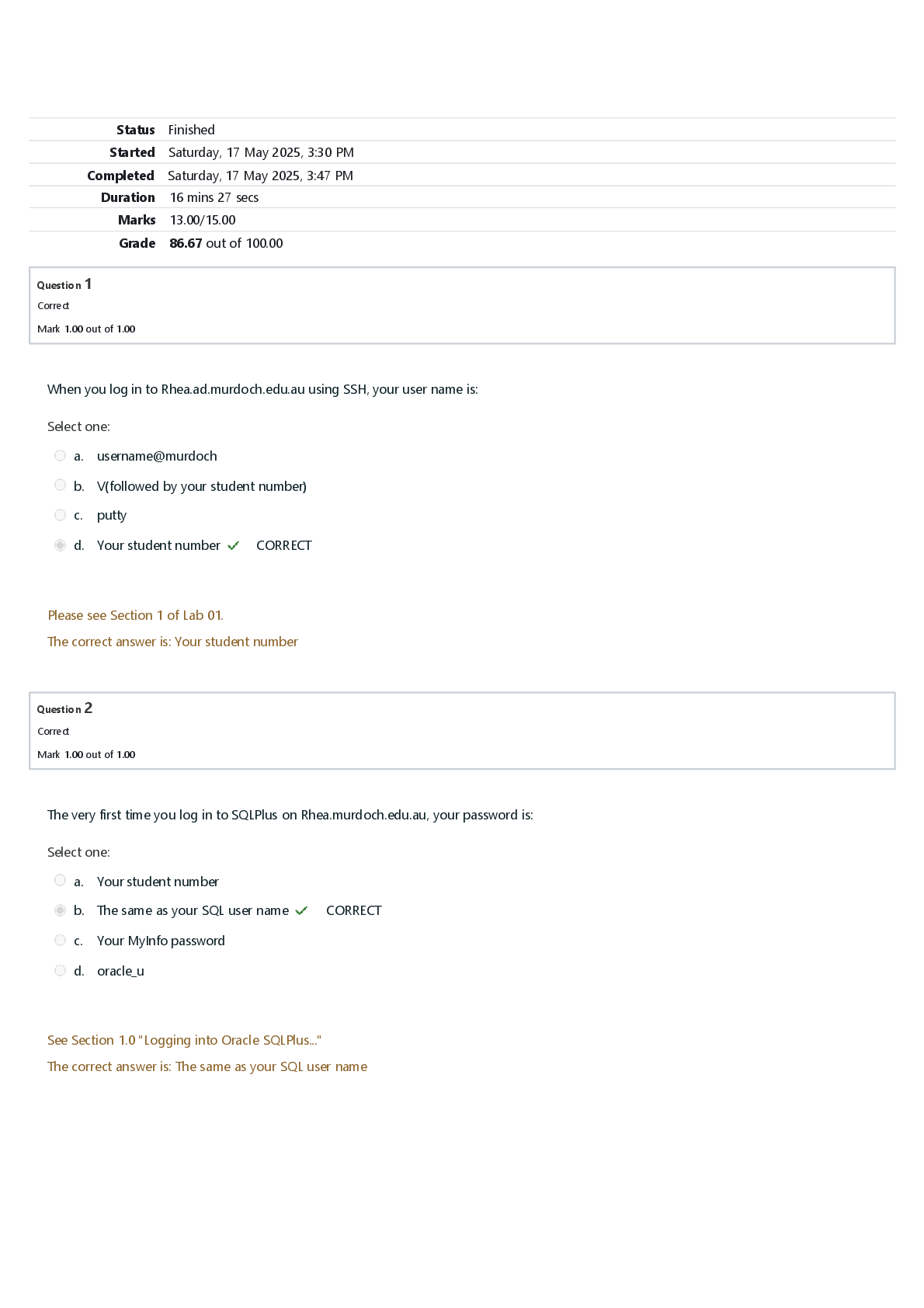
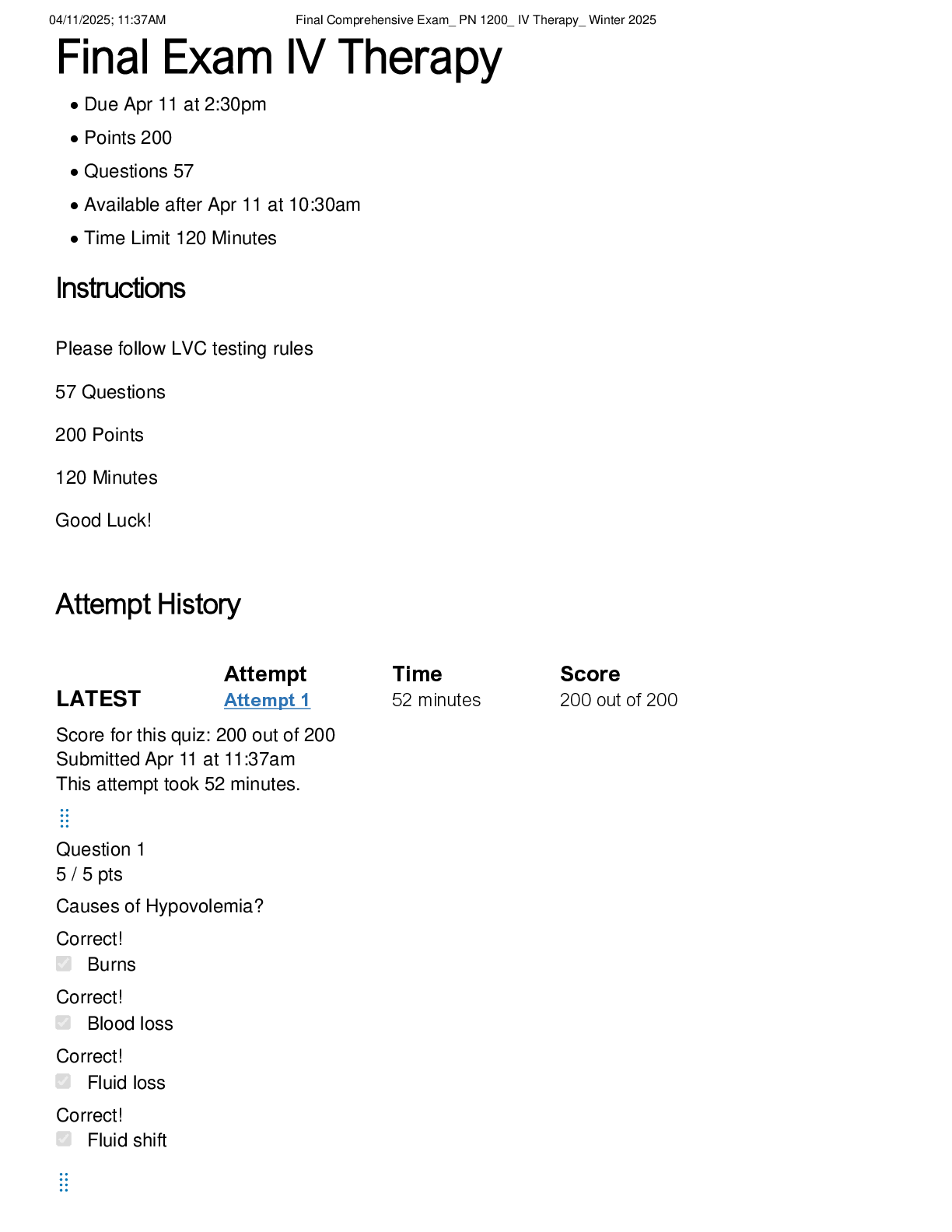
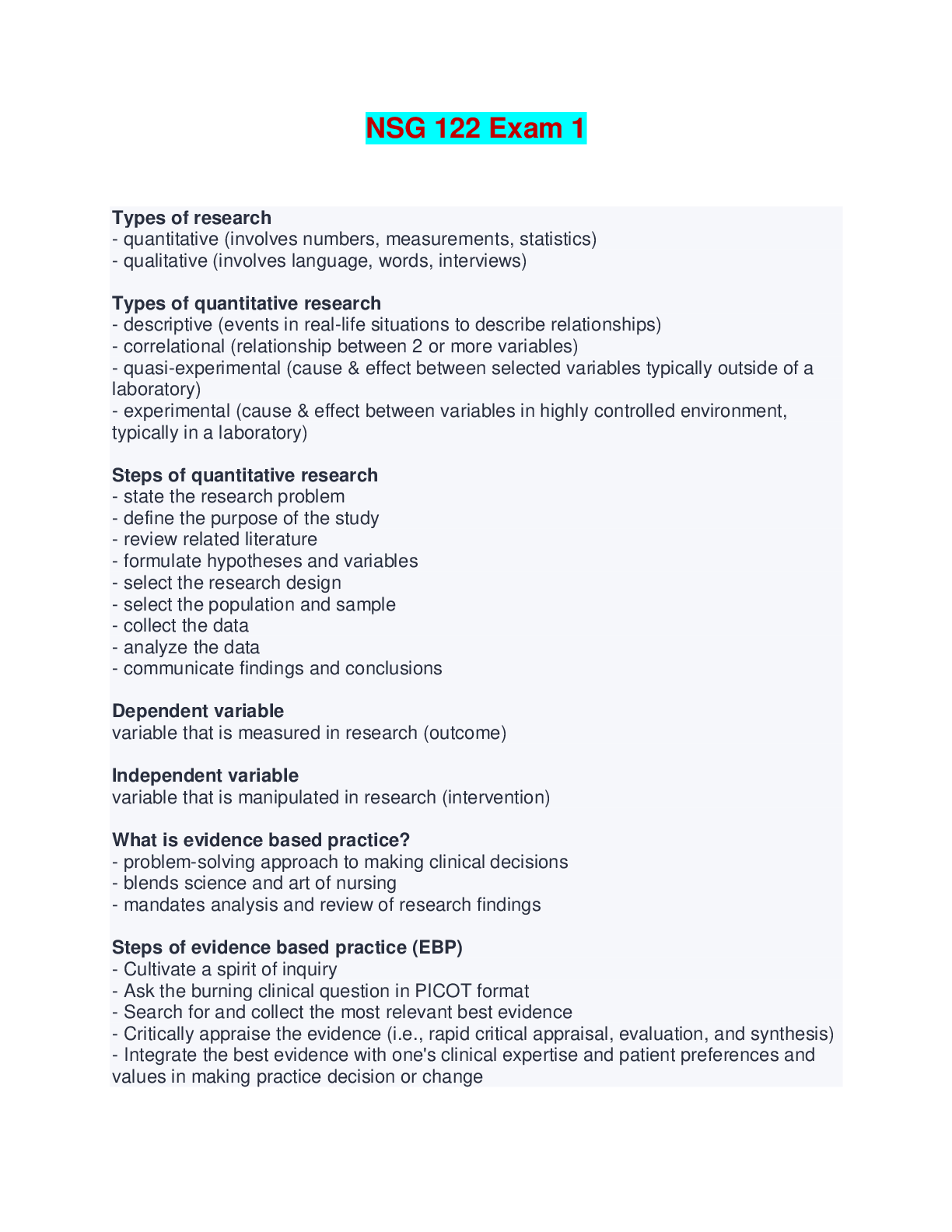
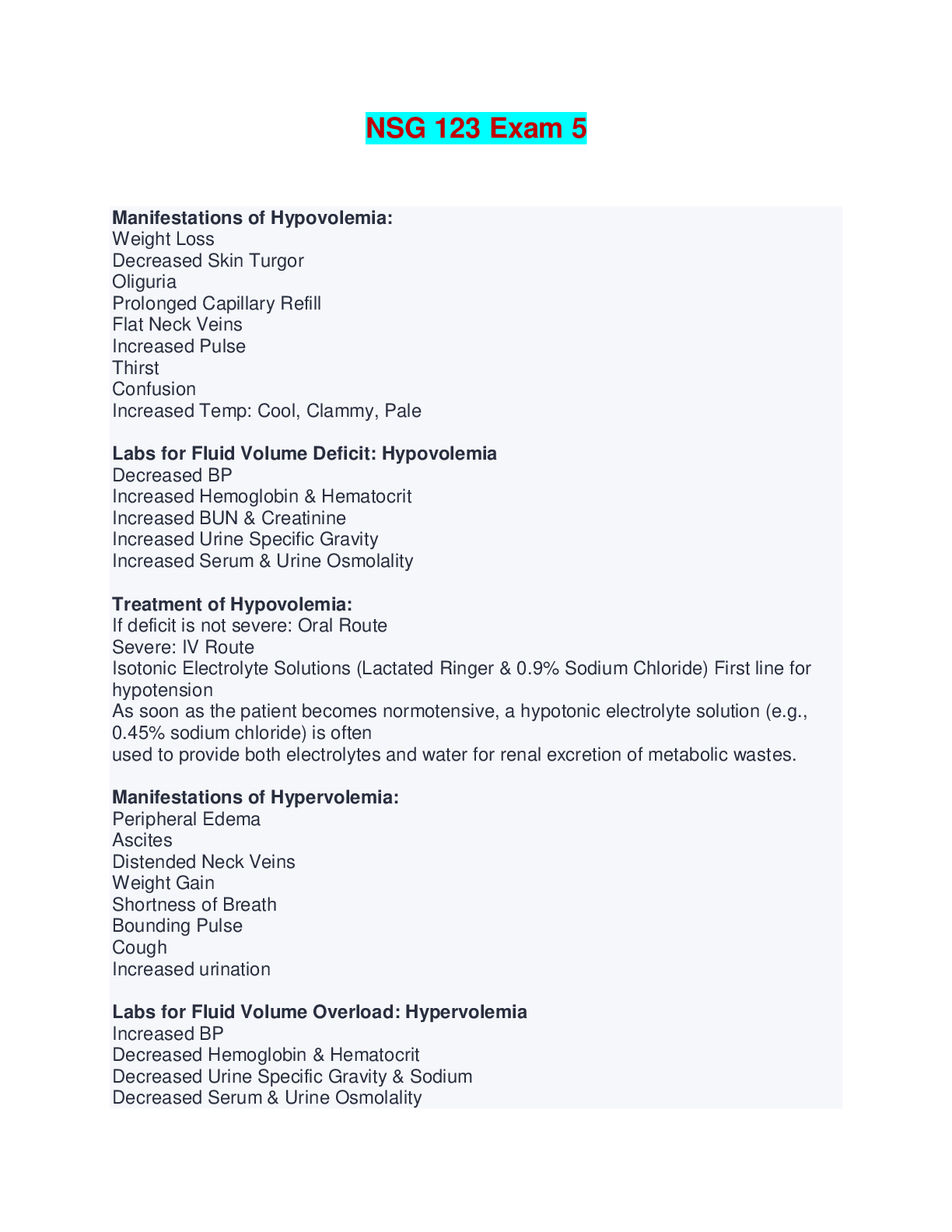
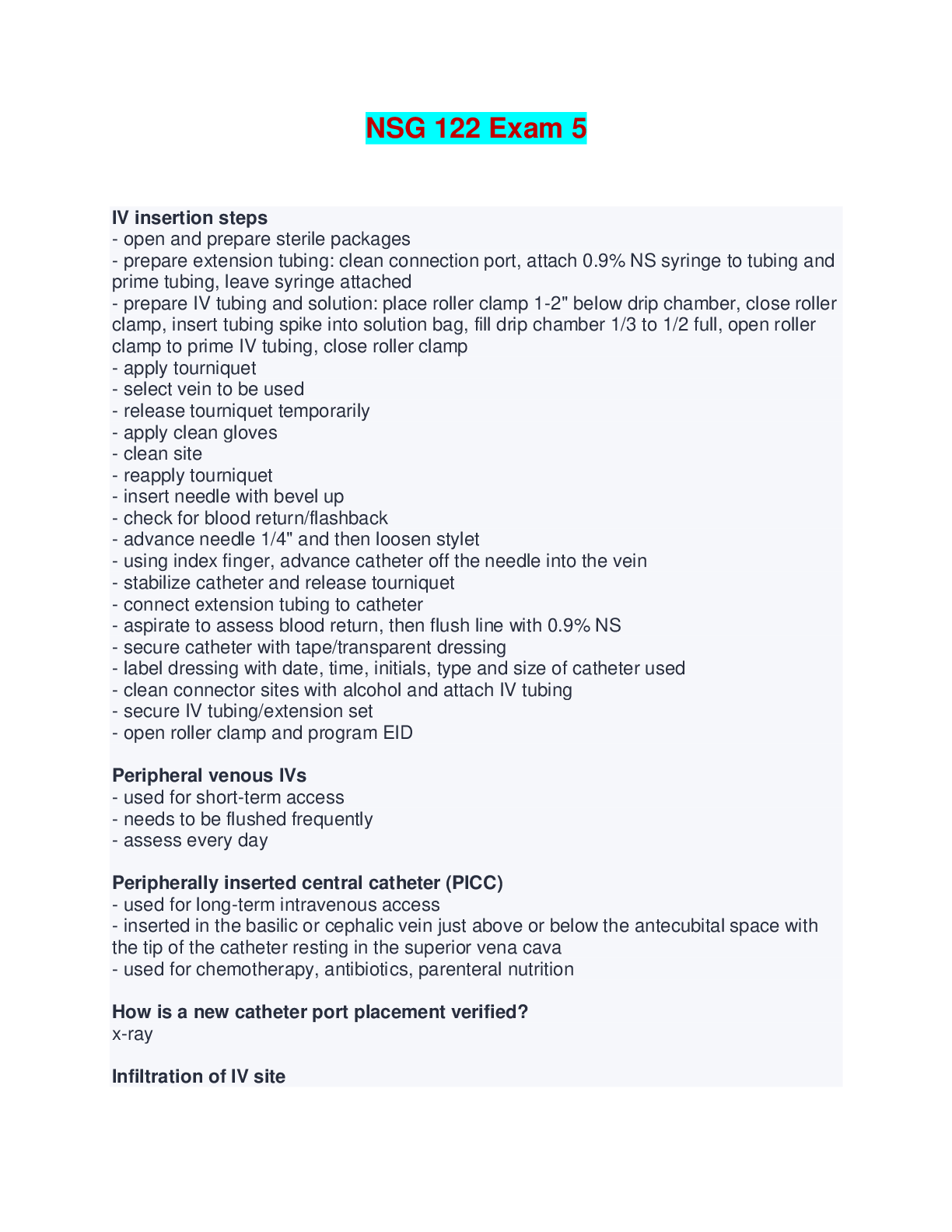

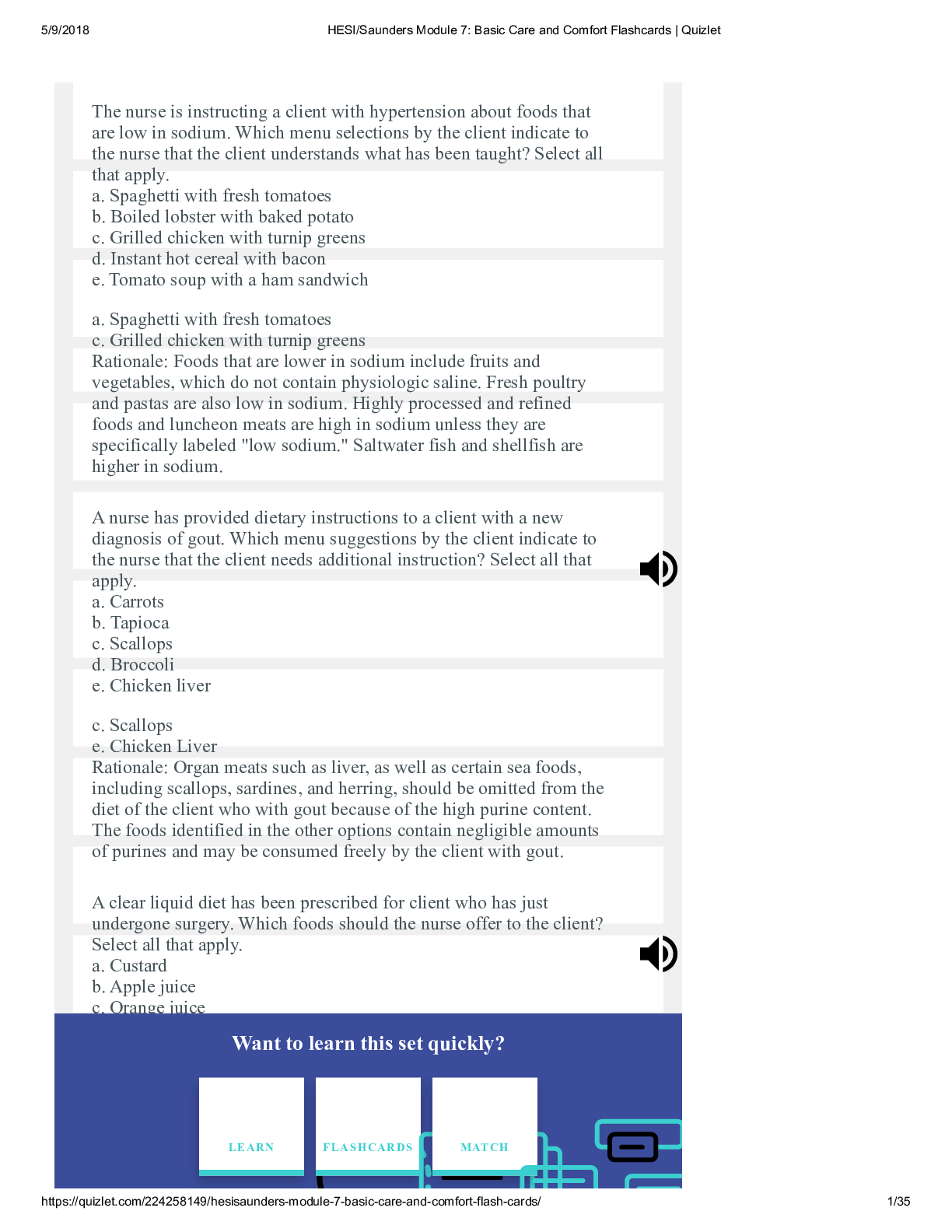
.png)


.png)

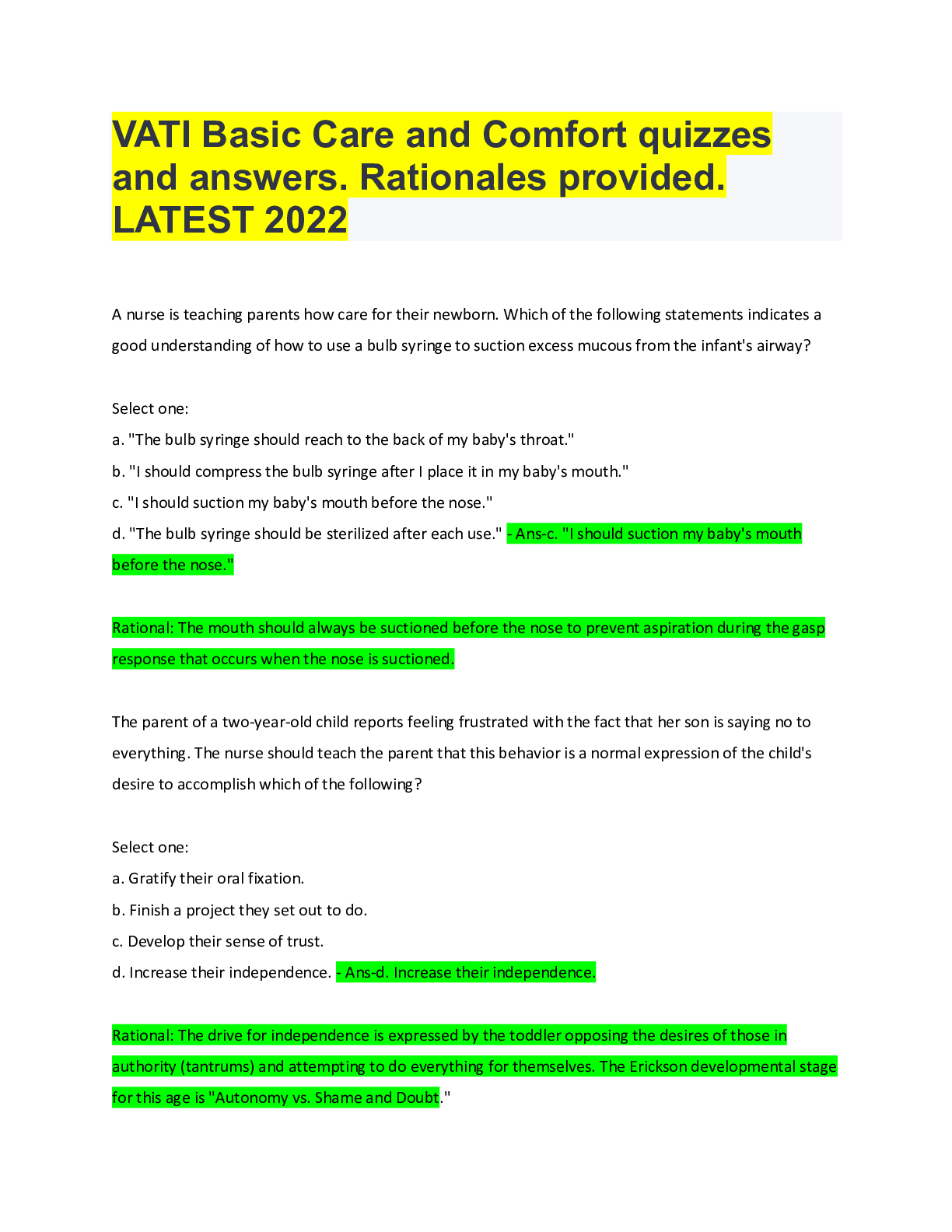
.png)
.png)
.png)
.png)

